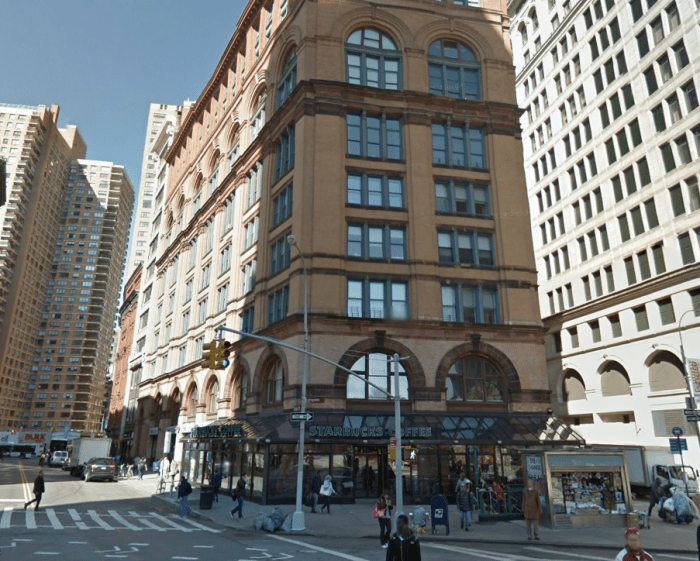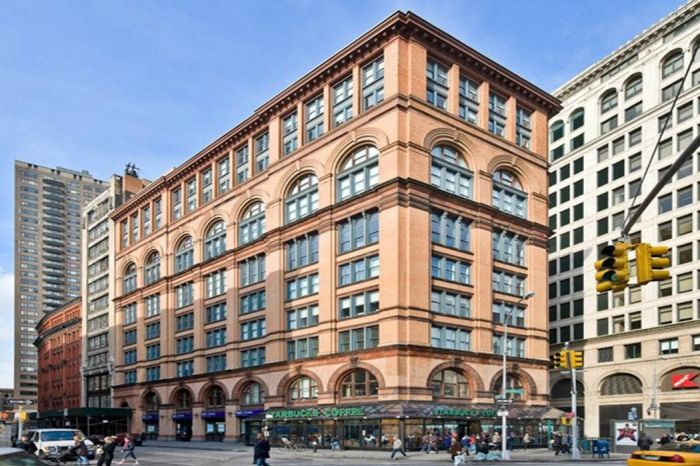Astor Place, a vibrant and historically rich neighborhood in the East Village of Manhattan, has played a pivotal role in the cultural and architectural landscape of New York City. From its humble beginnings as a residential enclave for the Astor family to its transformation into a thriving hub of arts, entertainment, and dining, Astor Place has left an indelible mark on the city’s fabric.
This bustling neighborhood is home to iconic landmarks, such as the Cooper Union Foundation Building and the Astor Place Cube, which have witnessed countless historical events and cultural milestones. The Public Theater and the Strand Bookstore have been instrumental in shaping the city’s performing arts and literary scenes, respectively.
Astor Place History

Astor Place, nestled in the heart of New York City’s East Village, has witnessed a rich and multifaceted history. The area’s evolution has been shaped by the vision and influence of the Astor family, architectural transformations, and a vibrant cultural scene.
The Astor Family Legacy
The Astor family, renowned for their wealth and philanthropy, played a pivotal role in the development of Astor Place. In the early 19th century, John Jacob Astor, the patriarch of the family, purchased land in the area and commissioned the construction of elegant row houses along what would become Astor Place.
The Astor family’s patronage extended beyond real estate. They supported the establishment of cultural institutions in the area, including the Astor Library, which later became part of the New York Public Library system. The family’s legacy continues to be felt in the neighborhood, with the Astor Place Theatre and the Astor Place Hotel serving as testaments to their enduring influence.
Astor Place is a vibrant neighborhood in Manhattan, New York City. While it may not be renowned for its scuba diving spots, it offers a unique blend of culture, nightlife, and dining options. If you’re looking to explore the underwater world, you can find plenty of scuba diving locations within a short drive from Astor Place.
Afterward, return to the neighborhood to unwind and immerse yourself in its lively atmosphere.
Architectural Evolution
The architecture of Astor Place reflects the changing tastes and styles of different eras. The early row houses built by the Astors showcased the Federal and Greek Revival styles popular at the time. In the late 19th century, the area underwent a transformation with the construction of cast-iron buildings, such as the Clinton Hall Association building.
Astor Place, a vibrant neighborhood in Manhattan, is home to various attractions. Its rich history and eclectic atmosphere make it a popular destination. Just a short distance away, the aquarium baltimore offers an immersive experience into the wonders of marine life.
Back in Astor Place, you’ll find art galleries, live music venues, and charming restaurants, making it a perfect place to explore and unwind.
The 20th century brought further architectural changes. The Astor Place Cube, a minimalist sculpture by Tony Smith, was installed in the center of the intersection in 1967. This iconic work of art has become a symbol of the neighborhood’s embrace of contemporary design.
Cultural Hub
Throughout its history, Astor Place has been a hub for cultural activity. In the 19th century, the area was home to theaters, concert halls, and literary societies. The Astor Place Riot of 1849, sparked by a performance of Shakespeare’s “Macbeth,” is a testament to the neighborhood’s vibrant cultural scene.
Astor Place, with its rich history and vibrant atmosphere, has been a cultural hub for decades. Just as aguadilla draws nature enthusiasts to its pristine beaches and turquoise waters, Astor Place attracts artists, musicians, and intellectuals to its eclectic shops and renowned music venues.
The spirit of creativity and innovation that permeates Astor Place makes it a true gem in the heart of Manhattan.
In the 20th century, Astor Place continued to attract artists and intellectuals. The Beat Generation writers, including Allen Ginsberg and Jack Kerouac, frequented the neighborhood’s coffee shops and bookstores. Today, Astor Place remains a thriving cultural destination, with numerous theaters, music venues, and art galleries.
Astor Place Landmarks

Astor Place is adorned with several iconic buildings and structures that have shaped its character and historical significance. From the architectural marvel of the Cooper Union Foundation Building to the enigmatic Astor Place Cube, these landmarks embody the neighborhood’s rich cultural heritage.
Cooper Union Foundation Building, Astor place
Designed by renowned architect Frederick A. Peterson, the Cooper Union Foundation Building is an architectural masterpiece that has stood the test of time. Completed in 1859, it was originally home to the Cooper Union for the Advancement of Science and Art, a free educational institution founded by philanthropist Peter Cooper. The building’s Victorian Gothic Revival style features intricate carvings, pointed arches, and a striking facade that has made it a beloved landmark.
Astor Place Cube
Nestled at the intersection of Astor Place and Lafayette Street, the Astor Place Cube is a enigmatic sculpture that has become a symbol of the neighborhood. Created by artist Tony Oursler in 1995, the cube is a giant LED screen that displays constantly changing images and text. Its enigmatic content has sparked numerous interpretations and discussions, making it a focal point for artistic expression and public discourse.
Astor Place Culture

Astor Place is a vibrant cultural hub in the heart of Manhattan. The neighborhood is home to numerous theaters, bookstores, and art galleries, making it a popular destination for both locals and tourists.
One of the most important cultural institutions in Astor Place is the Public Theater. Founded in 1954, the Public Theater is a non-profit theater company that produces a wide range of plays, musicals, and other performing arts events. The Public Theater has been home to many notable productions, including the original production of “Hair” and the Tony Award-winning musical “Hamilton.”
Another important cultural landmark in Astor Place is the Strand Bookstore. Founded in 1927, the Strand is one of the largest independent bookstores in the United States. The Strand sells a wide range of books, including new releases, used books, and rare editions. The Strand is also a popular destination for author readings and book signings.
In addition to the Public Theater and the Strand Bookstore, Astor Place is also home to a number of other cultural institutions, including the Cooper Union, the New York City Ballet, and the Astor Place Theater. Astor Place is a vibrant and diverse neighborhood with a rich cultural history.
The Public Theater
The Public Theater is a non-profit theater company that produces a wide range of plays, musicals, and other performing arts events. The Public Theater was founded in 1954 by Joseph Papp, and it has been a major force in the New York City theater scene ever since. The Public Theater has produced many notable productions, including the original production of “Hair” and the Tony Award-winning musical “Hamilton.”
The Public Theater is located in the Astor Place neighborhood of Manhattan, and it has two theaters: the Anspacher Theater and the LuEsther Theater. The Anspacher Theater is a 299-seat proscenium theater, and the LuEsther Theater is a 199-seat black box theater. The Public Theater also has a number of other spaces, including the Joe’s Pub cabaret and the Delacorte Theater in Central Park.
The Public Theater is committed to producing new and innovative work, and it has a long history of supporting emerging artists. The Public Theater also offers a variety of educational programs, including workshops, classes, and internships.
The Strand Bookstore
The Strand Bookstore is one of the largest independent bookstores in the United States. The Strand was founded in 1927 by Ben Bass, and it has been a beloved New York City institution ever since. The Strand sells a wide range of books, including new releases, used books, and rare editions. The Strand is also a popular destination for author readings and book signings.
The Strand is located in the Astor Place neighborhood of Manhattan, and it has over 18 miles of bookshelves. The Strand is known for its eclectic selection of books, and it has something for everyone. The Strand also has a number of knowledgeable and helpful staff members who are always happy to help customers find the perfect book.
The Strand is a beloved New York City institution, and it is a must-visit for any book lover. The Strand is a place where people can come to browse, discover new books, and meet other book lovers.
Astor Place Dining and Nightlife

Astor Place boasts a vibrant culinary scene, catering to diverse palates. From upscale eateries to cozy cafes, the neighborhood offers a range of dining experiences that will satisfy every craving.
Among the notable restaurants on Astor Place is Momofuku Ssäm Bar, known for its innovative Korean-inspired dishes and playful ambiance. Minetta Tavern, a classic steakhouse, has been a Greenwich Village staple for decades, offering a timeless dining experience. For a more casual affair, Salvation Taco serves up mouthwatering tacos and margaritas in a lively setting.
Nightlife
As the sun sets, Astor Place transforms into a lively nightlife destination. The Bitter End, a legendary folk music club, has hosted countless renowned artists over the years. Bar Belly offers a cozy atmosphere and an eclectic selection of craft beers. For a more energetic experience, The Roof at Park South Hotel provides stunning city views and a vibrant dance scene.
Astor Place Transportation and Accessibility
Astor Place is conveniently located in the heart of Manhattan, making it easily accessible by various transportation options. Its proximity to public transportation and availability of nearby parking facilities ensure a seamless commuting experience for residents, visitors, and commuters alike.
Public Transportation
Astor Place is well-connected to the New York City subway system. The 6 train has a station at Astor Place, providing direct access to the Upper East Side, Midtown Manhattan, and Brooklyn. Additionally, the N and R trains are accessible at the 8th Street-New York University station, just a short walk away. Numerous bus routes also serve Astor Place, offering convenient connections to other parts of the city.
Parking
For those who prefer to drive, several parking garages are located within walking distance of Astor Place. The Astor Place Parking Garage, located on East 8th Street, offers both hourly and monthly parking rates. Other nearby parking options include the 6th Street Garage and the 9th Street Garage.
Last Recap
Today, Astor Place continues to captivate visitors and locals alike with its eclectic mix of historical charm and modern vitality. Whether you’re seeking cultural enrichment, culinary delights, or simply a glimpse into the city’s past, Astor Place offers an unforgettable experience.
FAQ Corner
What is the significance of the Astor family in Astor Place?
The Astor family was instrumental in the development of Astor Place. They purchased the land in the early 19th century and built a series of elegant mansions, which attracted other wealthy families to the area.
What are some of the notable architectural landmarks in Astor Place?
Astor Place is home to several notable architectural landmarks, including the Cooper Union Foundation Building, the Astor Place Cube, and the Public Theater. These buildings represent different architectural styles and have played significant roles in the cultural and historical development of the neighborhood.
What is the cultural significance of Astor Place?
Astor Place has been a hub for culture and the arts for centuries. It is home to the Public Theater, which has produced groundbreaking theater productions, and the Strand Bookstore, which is one of the largest and most beloved independent bookstores in the world.